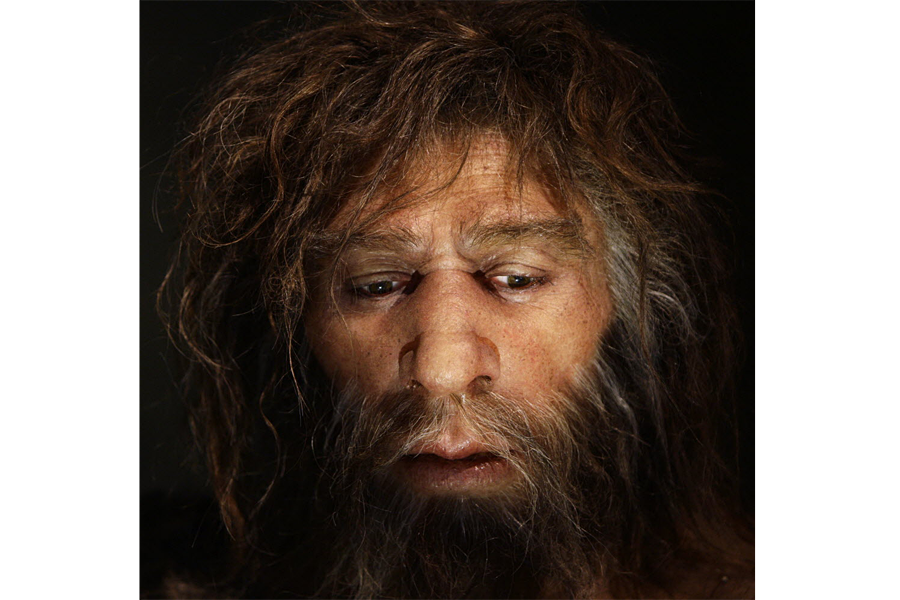Researchers find no trace of Neanderthal Y-chromosomes in modern humans
Neanderthals and Homo sapiens interbred tens of thousands of years ago, leaving us with a bit of the archaic humans' DNA. But scientists aren't clear how viable such hybrid offspring would have been.
Since about 2 percent of all non-African modern human genomes today come from Neanderthals, it's clear that some of these hybrid children were successful. But geneticists conjectured that the hybrid males may have faced more challenges than the hybrid females.
And a new study suggests their suspicion was right. It turns out that the Neanderthal Y-chromosome appears in no known H. sapiens genomes still around today.
Both H. sapiens and Neanderthals are believed to be descended from Homo heidelbergensis, a human species that emerged in Africa some 700,000 years ago and spread to Europe and Western Asia. Scientists believe that the African branch began to evolve into H. sapiens while the Eurasian branch evolved into Neanderthals. The two lineages became entwined again, possibly as far back as 100,000 years ago, when H. sapiens began to migrate out of Africa and encountered their stocky, barrel-chested relatives.
This new study sheds light on a longstanding debate among scientists over how similar Neanderthals were to H. sapiens, sharpening our picture of an intriguingly tangled group of branches within the human family tree.
"The fact that the Neanderthal Y we describe has never been observed in modern humans suggests that the lineage is most likely extinct," the study authors write in their paper published Thursday in the American Journal of Human Genetics.
So what drove the Neanderthal Y-chromosome to extinction?
It's possible that the archaic sequences simply slipped away over time, as generations of hybrids interbreeding with modern humans diluted those genes. But those Neanderthal genetics might have been disadvantageous for hybrids too, suggests study lead author Fernando Mendez, a geneticist at Stanford University.
"There is the idea that maybe there were some genetic variants that when combined in hybrids had negative effects," he tells The Christian Science Monitor in an interview. So his team dug into the Neanderthal Y-chromosome hunting for genes that could affect the fitness of the hybrid offspring.
Dr. Mendez and his team found three mutations in the Neanderthal sequence that could affect the viability of male hybrid offspring, one of which, he says, would cause a pregnant mother's body to reject any male fetus that carried that gene.
This problem wouldn't be isolated to just the first generation of hybrids. "It doesn't have to be the case that in the first generation males are not viable or infertile," Mendez says. "Even if the effect was weak, the Y-chromosome from Neanderthals would have had a harder time being passed every generation. It would have been removed eventually."
But Mendez cautions that just because there is some evidence of genetic incompatibilities and particular challenges for male offspring, the Y-chromosome could still have simply been lost over time.
"I think the observation that you don't see the Neanderthal Y-chromosome at all is consistent with the idea that there were fitness consequences to hybridization," says Joshua Akey, a geneticist at the University of Washington who was not part of this study, in an interview with the Monitor. But, he says, more research investigating the effect of these genetic differences on hybrids is necessary to clarify the story.
Why Y?
"The Y-chromosome is strictly inherited from fathers to sons, so it provides the paternal history of a population," Dr. Akey says. Previous studies had compared other parts of Neanderthal and modern human DNA, including mitochondrial DNA, which represents maternal lineages.
"This is the piece that was missing. We knew about everything else but we didn't know about the Y-chromosome," Mendez says.
How did Neanderthals and H. sapiens meet?
Not until after H. sapiens migrated out of Africa, most likely. Modern African genomes have no archaic human DNA, suggesting that the interbreeding event or events occurred outside Africa.
When H. sapiens spread across Eurasia tens of thousands of years ago, they weren't moving into an unpopulated space. Other human species had settled in before them, so our ancestors likely bumped into these archaic humans across Europe and Asia.
At some point, those interactions led to mating.
Neanderthals weren't the only archaic human to intermingle with these anatomically modern humans. Denisovans, close cousins of Neanderthals, also contributed DNA to the modern human genome in some regions.







